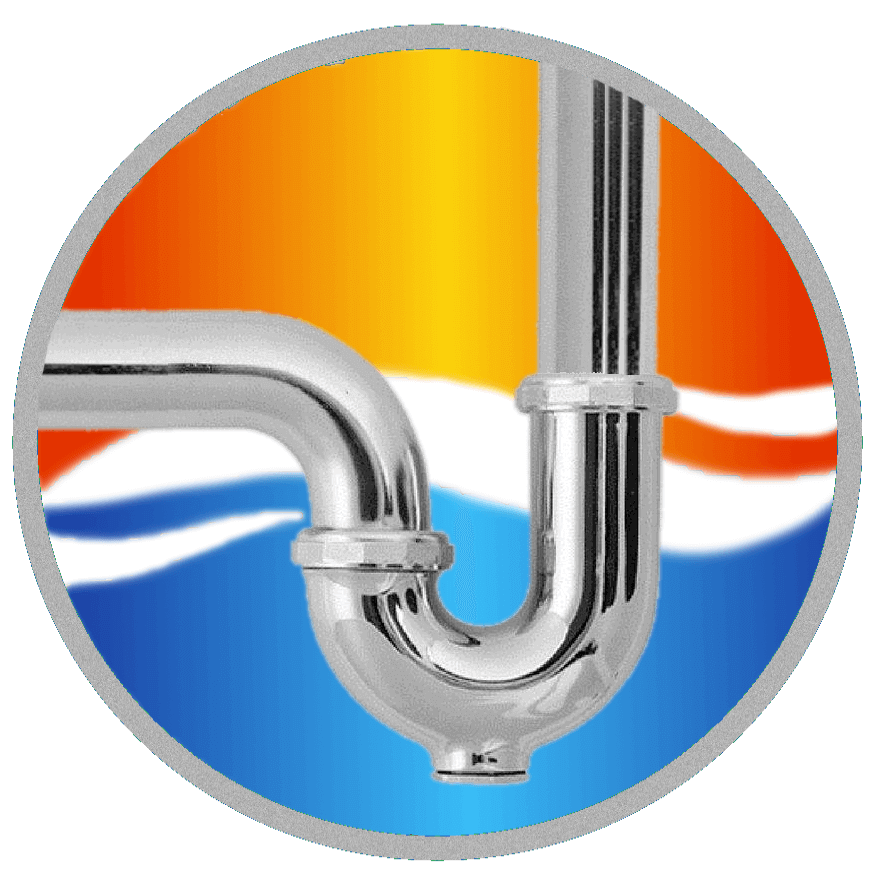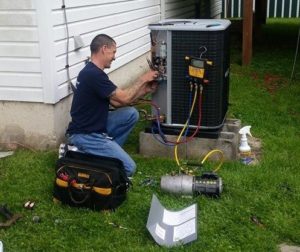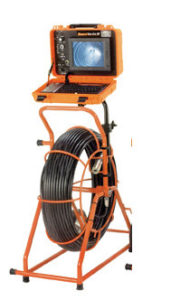 A sewer line camera is now a powerful tool in the plumbing industry. We understand the value it offers our customers.
A sewer line camera is now a powerful tool in the plumbing industry. We understand the value it offers our customers.
That is why we have invested in a sewer line camera to better meet our customer’s needs. Most homeowner’s do not understand that the sewer line buried underground on their property is their responsibility should it crack, break or no longer provide the service it’s intended to provide. As your home gets older, so does this sewer line. Your “sewer line” refers a pipe carrying water with human waste at atmospheric pressure.
Leaks and breaks are commonly caused by aging, corrosion, extreme temperatures, or settling or shifting of the ground. If this line fails, repair or replacement could cost thousands of dollars and most homeowners insurance policies or home warranty companies do not cover repairs. So, in these cases, we use our sewer line camera to inspect your sewer line. Here are some advantages:
Sewer Line Camera Inspection
It all starts with a sewer line inspection. An inspection allows our technicians to identify current or potential problems in your sewer line. Real time video image transmission allows our technicians to determine the condition of the inside of the pipe and understand any existing or potential problems. The images can also be saved for a permanent record. For example, you might not have a problem right now; but if and when you do, we have a record that enables us to quickly identify the problem the next time.
Value of a Sewer Line Camera Inspection
Here’s the value to you. Let’s say we identify a potential problem in your sewer line. For example, the ground has shifted and perhaps we have signs of aging. Yet, you may not have a break or major problem for another five years. This gives you ample time to perhaps find an inexpensive insurance solution to your problem. On the other hand, if your line is corroded or obstructed with sludge, dirt or other debris, we might be able to clean it with our sewer line jetter.
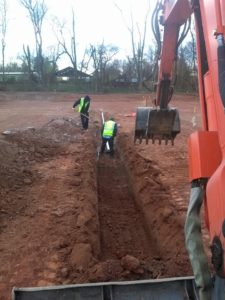 Here’s another major advantage of a sewer line camera inspection. We can often avoid or minimize the “dig.” The dig is an expensive and labor intensive process. Obviously, its much less expensive to the homeowner is we can clean the sewer line with out jetter.
Here’s another major advantage of a sewer line camera inspection. We can often avoid or minimize the “dig.” The dig is an expensive and labor intensive process. Obviously, its much less expensive to the homeowner is we can clean the sewer line with out jetter.
Or perhaps we don’t have to completely replace the entire sewer line. With our inspection, we might be able to determine if the problem is localized. In that case, we can minimize damage to your property and simply replace a section of your sewer line.
In summary, we have added a sewer line camera to our plumbing services. With our camera we can better serve our customer’s needs. The sewer system is something most homeowners don’t think about until there’s a problem. With a sewer line camera inspection we can help our customers avoid much higher costs. While this article focused on residual homeowners, this service is also available to our commercial and municipal customers.
Call our office for more information or
to schedule your sewer line camera inspection:
240-222-3205
Related Articles:
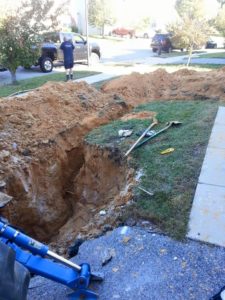 Water Line Repair is expensive! The purpose of this article is to help our readers understand the cause and effect of water line problems, and to help you identify the most common signs of water line damage.
Water Line Repair is expensive! The purpose of this article is to help our readers understand the cause and effect of water line problems, and to help you identify the most common signs of water line damage.
As a homeowner, you do everything you can to keep your homes and your loved ones safe. It’s a constant battle. You may have a warranty for appliances, health insurance for your pets, and take other preventative measures. However, most of us don’t think about our water and sewage lines, which when damaged can cause serious property damage, an increase in water and sewer bills and costly repairs. Water line repair often involves digging up your yard. This is a major expense.
You may think that this may not happen to you, but the truth is – many homeowners will suffer through this dilemma this year. In fact, based on information from the “Water is Your Business” campaign – every day there are 650 water main breaks in America, a loss of 7 billion gallons of water.
What’s more? Your local water utility or municipality is not responsible for the pipes that run through your property – you are. In other words, you are financially responsible for any necessary repairs. It may also surprise you to know that most homeowner’s insurance policies do not cover the repair costs of your water lines, which leaves your biggest investment vulnerable and your pockets empty.
Water Line Repair: Cause & Effect
Having fresh water piped into your home is essential to a comfortable daily life. And when something upsets that water flow, it’s nearly impossible to relax. This isn’t something that just happens out of the blue, the truth is there are a number of factors that make your pipes susceptible to damage over time. They include:
- The age of your pipes: The majority of the water pipes in America were installed after World War II and are in serious need of replacement. Having an idea of the age of your pipes will help you determine whether they need to be repaired or replaced – 50 is typically the magic number.
- The presence of mature trees: The tree roots of mature trees can grow into the pipes and cause blockages and clogs. Invasive tree roots often seek out pipelines because they provide vital nutrients (like water and oxygen) that the trees need to grow.
- Poor soil conditions: If you live in an area where the soil may have a high chloride content or low soil resistivity, it can cause your pipes to corrode faster than normal. If this happens, it can lead to contamination and leaks.
Water Line Repair: 3 Signs of a Damaged Water Line
There are several warning signs that can help you stop your water line damage in its path before things get worse – and more expensive. Some of them include:
- Soggy spots in your yard: If the skies in your area have been clear for a while but there are still damp spots on your lawn, this may indicate that your water line is cracked and leaking water.
- Low water pressure: If you notice that the water pressure in your home has decreased, your water line may have a leak. While there are other reasons for low water pressure, it’s better to be safe than sorry. Consult a professional to determine the cause.
- Water discoloration: Does your tap water have a rust colored tint? This type of discoloration typically happens if your pipes are rusted or even due to soil and dirt entering the cracks.
Conclusion
Because water line repair and replacement is not typically covered by homeowner’s insurance, these types of issues can cost thousands of dollars to fix. Furthermore, most homeowners do not even think about their water lines. You can’t see them, so you don’t worry about them. Thus, it’s important that you take preventative measures to keep your home protected from water damage to keep more of your money in your pocket. Pay attention to any slight changes that may affect your water lines and consult a professional for regular inspection and maintenance to avoid water line repair.
Stayed tuned for our follow up article on: 3 Factors That Impact Water Line Installation and Cost
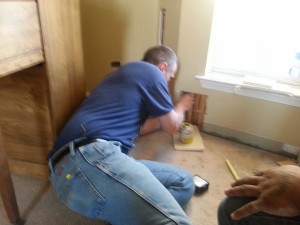 Frozen water pipes create huge problems for homeowners. When outdoor temperatures drop below freezing, the water pipes inside your home can easily freeze. Freezing water expands. This expansion causes the pressure inside the pipes to increase, leading to bursting water pipes in your home. During the cold winter months, you are probably not going to experience any problems because these now broken pipes will most likely remain frozen. However, when Spring hits, these broken water pipes will thaw as temperatures warm. That’s when these leaks cause huge problems. These leaks can be extremely hard to find, but they have to be found to keep water from spoiling your home. This creates an expense that you need to avoid.
Frozen water pipes create huge problems for homeowners. When outdoor temperatures drop below freezing, the water pipes inside your home can easily freeze. Freezing water expands. This expansion causes the pressure inside the pipes to increase, leading to bursting water pipes in your home. During the cold winter months, you are probably not going to experience any problems because these now broken pipes will most likely remain frozen. However, when Spring hits, these broken water pipes will thaw as temperatures warm. That’s when these leaks cause huge problems. These leaks can be extremely hard to find, but they have to be found to keep water from spoiling your home. This creates an expense that you need to avoid.
High winds add to the problem. As we write this article, we are expecting a significant snow and wind blizzard in the DC and Maryland area tomorrow through Sunday. When these freezing winds, expecting to gust up to 55 miles per hour, hit your home, they threaten your inside water pipes. Pipes that run against exterior walls that have little or no insulation are most vulnerable to freezing. There are ways to prevent frozen water pipes. We want to give you some quick and easy tips to use throughout these winter months.
Here are some tips to help prevent frozen water pipes:
- Ensure that critical areas are adequately heated. Every home is different and their location is different. Based on forecasts, it seems that these freezing winds will come from the Northeast. You may or may not know exactly where your home sits and how this may impact you. With high winds come drifts. If the drifting snow is piling up in the front of your house, ensure that the front of your house is adequately heated. That should be your primary focus during a storm or major cold weather event.
- Maximize the heat you’re already generating. Here’s an example. Let’s say you are using your oven to bake or cook your dinner. Your oven generates excess local heat in your kitchen. If you have water pipes in your kitchen, as most people do, open your cabinet doors to allow this excess heat to warm your pipes.
- Keep the temperature in your home consistent. A lot of homeowners moderate or control their heating system depending on whether they are home, not at home or in bed under cozy and warm covers. You may pay a little more in energy costs, but certainly a lot less if you have frozen water pipes eventually streaming unwanted water into your home. Keep the temperature set at the same levels during these events. You may even want to overheat your home by a few degrees.
- Use space heaters to heat your most vulnerable areas. Grant it, you are not going to run to Walmart to purchase portable heaters. Most homeowners in our area have already done their shopping and have prepared their families for this blizzard. However, if you have some portable heaters, use them to protect the most vulnerable areas in your home.
Proper insulation in select areas of your home can help prevent a costly unwanted expense associated with frozen water pipes. But, the purpose of this article is simply to provide some quick tips to help you during this impending blizzard and upcoming winter months. If you need help or advice, we are here for you; just give us a call for more information.



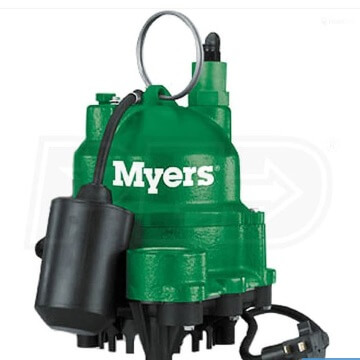
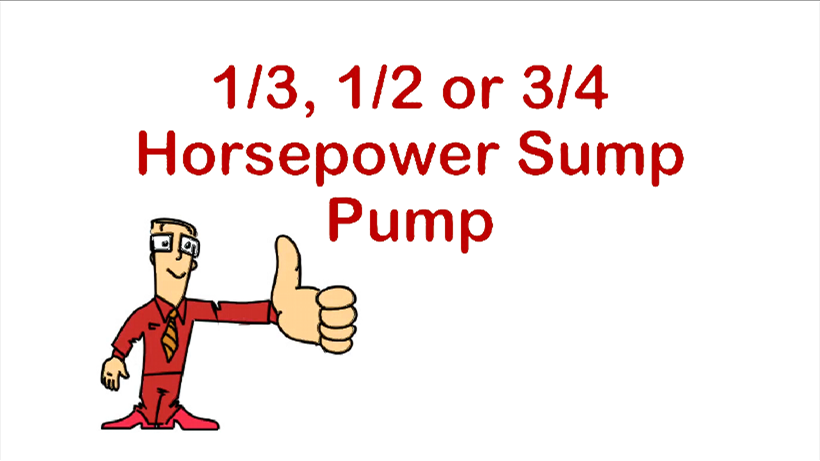



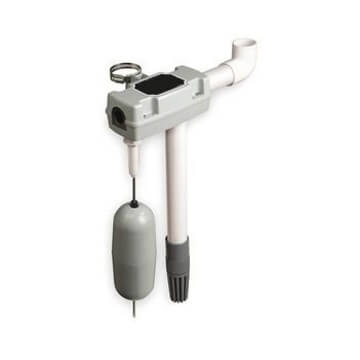
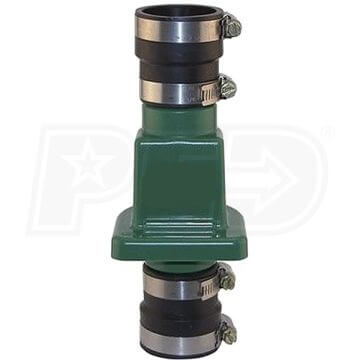
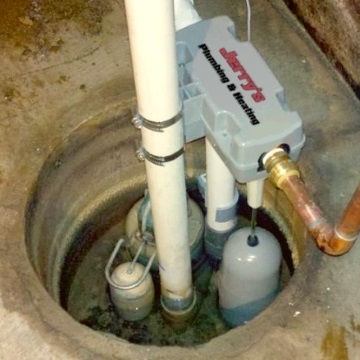
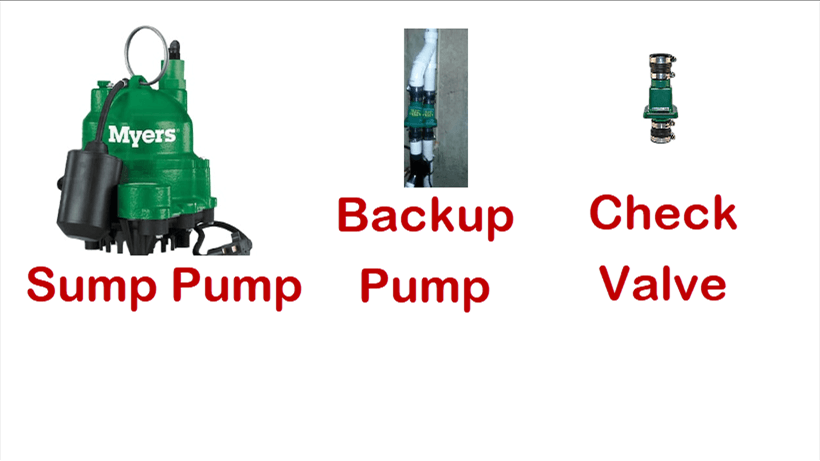
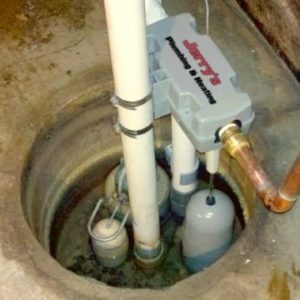 But during heavy rains, especially if you have a high water table in your area, some water will leak into your basement.
But during heavy rains, especially if you have a high water table in your area, some water will leak into your basement.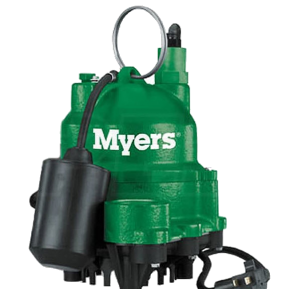 But since a sump pump is just a machine,
But since a sump pump is just a machine, 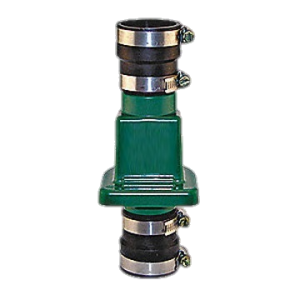 It keeps the water being pumped out of your basement from flowing right back in through that same drain pipe.
It keeps the water being pumped out of your basement from flowing right back in through that same drain pipe.


